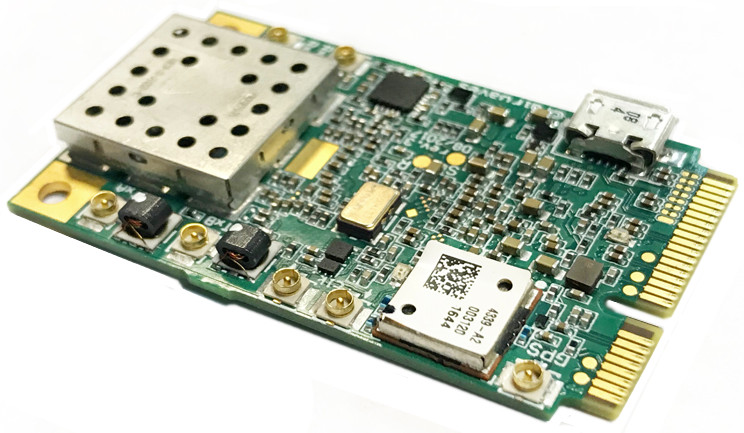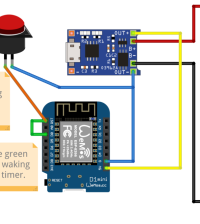- How to Adjust X and Y Axis Scale in Arduino Serial Plotter (No Extra Software Needed)Posted 7 months ago
- Elettronici Entusiasti: Inspiring Makers at Maker Faire Rome 2024Posted 7 months ago
- makeITcircular 2024 content launched – Part of Maker Faire Rome 2024Posted 9 months ago
- Application For Maker Faire Rome 2024: Deadline June 20thPosted 11 months ago
- Building a 3D Digital Clock with ArduinoPosted 1 year ago
- Creating a controller for Minecraft with realistic body movements using ArduinoPosted 1 year ago
- Snowflake with ArduinoPosted 1 year ago
- Holographic Christmas TreePosted 1 year ago
- Segstick: Build Your Own Self-Balancing Vehicle in Just 2 Days with ArduinoPosted 1 year ago
- ZSWatch: An Open-Source Smartwatch Project Based on the Zephyr Operating SystemPosted 1 year ago
XTRX – A high-performance SDR in a mini PCIe form factor

The Fairwaves XTRX mini-PCIe SDR card, launched on Nov. 30 at Crowd Supply, is a low-cost embeddable SDR card aimed at high data rate apps including 4G/5G and “massive” MIMO. The company claims the full sized mini-PCIe XTRX card (30 x 51mm) is the smallest commercially available SDR card.
Fairwaves, which is a small company with staff residing in the U.S. and Europe, says it’s targeting the XTRX SDR at IoT, drone, satellite, and LTE/5G cellular applications. In addition to the XTRX mini-PCIe card, the Crowd Supply campaign also offers an aluminum-enclosed USB3 adapter that contains an XTRX card on a USB3-interfaced carrier, as well as a half-sized PCIe card that adapts the XTRX to a PC’s PCIe x4 slot. There’s also a full-sized PCIe x16 card that accepts up to eight XTRX boards, for use in high-end multiple-SDR applications.
Fairwaves states on the campaign page that “the XTRX card’s main FPGA code is open source and without a viral license, so not only can you modify the code, but you can also develop your own proprietary FPGA blocks.” Host-side software and drivers are also open source, and “you can upload your own firmware with our USB 3 adapter board or with a JTAG cable and our PCIe adapter board,” says the company.
With regard to the hardware designs, “The XTRX hardware itself is proprietary, though the hardware accessories we designed for it (e.g., the USB 3 and PCIe adapters) are open hardware,” they says.
Fairwaves lists the following features and specs for the initial XTRX boards:
- RF chipset — Lime Microsystems LMS7002M FPRF
- FPGA — Xilinx Artix 7 35T
- Channels — 2×2 MIMO
- Sample rate — ~0.2 to 120 MSPS
- Tuning range — 30MHz to 3.8GHz (* see note below)
- Rx/Tx range:
- 10MHz to 3.7GHz
- 100kHz to 3.8GHz with signal level degradation
- PCIe Bandwidth:
- PCIe x2 Gen 2.0 — 8 Gbit/s
- PCIe x1 Gen 2.0 — 4 Gbit/s
- PCIe x1 Gen 1.0 — 2 Gbit/s
- Reference clock:
- Frequency — 26MHz
- Stability — < 10 ppb stability after GPS/GNSS lock, 500 ppb at start-up
- Bus latency < 10µs, stable over time
- Synchronization — synchronize multiple XTRX boards for massive MIMO
- GPIO:
- FPC Edge Connector — 4x lines (usable as two diff-pairs)
- mini-PCIe 8x reserved pins — 2x diff-pairs, 1pps input, 1pps output, TDD switch control, and 3x LEDs
- Dimensions — 30 x 51mm; full-size mini-PCIe















